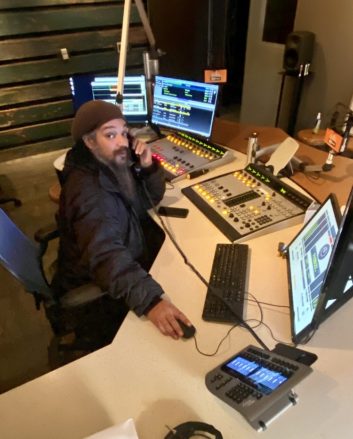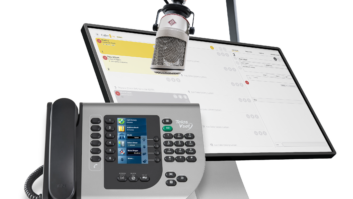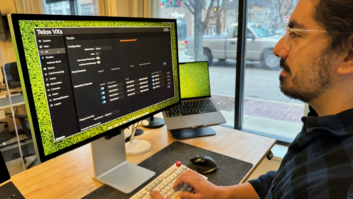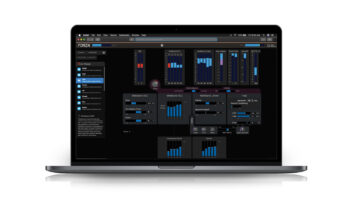
The author is a partner at Inrush Broadcast Services.
MILWAUKEE — 88Nine Radio Milwaukee (WYMS/88.9 MHz) is a catalyst for creating a better, more inclusive and engaged Milwaukee through music and stories created for a culturally open-minded community. Their studio facility, built in 2013, is located in the Third Ward neighborhood. All of their programming, including their subchannel 414 Music exclusively devoted to local music, originates from those studios today.
When 88Nine moved into their new space, the studios were filled out with a combination of Telos Hx1 hybrids and an Nx12 talk show from the old building. In a call back to the 1970s, POTS service was dropped directly into the new building and distributed to studios via Cat-6 patch panels.
However, being forward-thinking in both programming and technical areas, Radio Milwaukee adopted the VX in early 2015.
To allow staff a chance to establish a comfort level with the new system, the VX first replaced the Nx12 in the main air studio while the scattered Hx1 hybrids remained. The staff found the transition to be seamless as the phone module of the Axia Element console displayed the lines identically. A VSet12 12-line phone was also deployed in the air studio for talent that was more comfortable with a more traditional phone instrument.
The improved audio quality and increased reliability of VoIP was immediately noticeable, all while operational telecom expenses were reduced dramatically.
When the VX was implemented in 2015, it connected to our VoIP provider Flowroute directly over the public internet, and has performed flawlessly ever since. In 2020, as we planned our migration to Flowroute’s more robust peering infrastructure, we chose to forgo this direct connection.
We instead made the VX an endpoint on the facility’s newly commissioned Asterisk-based VoIP PBX and trunked the PBX to Flowroute. This will allow the staff to make extension-to-extension calls (when they’re finally back in the building) and enables unified telecom administration.
The VX still performs flawlessly behind the VoIP PBX. Creating additional extensions has been a breeze and we’ve been able to quickly add phone numbers in Flowroute, map those numbers to extensions in the PBX, and add them to the VX.
Since 88Nine is a fully Axia-based facility, this can all be done remotely in a matter of minutes — one of many conveniences afforded by VoIP and AoIP during the pandemic.
In the main studio, the VX has been an integral part of “Let’s Hear It,” a weekly request show hosted by Marcus Doucette for many years. It also allows 88Nine to continue interacting with their local community on a more individual level through frequent contesting and listener contributions.
After the VX deployment in the main air studio, we began looking at expansion to the other studios. A backup control room also featured an Axia Element console with a phone module, so a VSet telephone was purchased and it was configured as a mirror of the main studio.
However, the staff found that they preferred to only use the Element phone module for control in that environment. With the versatility of the VX ecosystem we were able to use the VSet in a production studio that already featured an Axia iQ console. Creating the additional studio and show in the VX was just as simple as the main studio. It was far more time-consuming to remove the Hx1 and its wiring than configuring the new hybrid in the VX!
During the pandemic, the VX has been indispensable.
Pledge drives at the station normally featured a full phone bank of volunteers and multiple hosts on a stage, pitching for the station. This year, during two different pledge drives, access to the studio space was severely restricted. The VX served as a simple method for getting multiple hosts on the air, with one staff member in the studio and others into a dedicated VIP line. Other calls are handled on the additional hybrid channel and regular call-in group.
The Omnia audio processing built into VX makes these phone calls sound clean and full.
In the future, the remaining production rooms will have VSets installed so the VX can handle telephony for the entire studio facility. Retiring the remaining POTS hybrids won’t have the same cost savings as with the main studio since these last few lines are already running on ATAs [analog telephone adapters], but it will continue to simplify management and provide a consistent studio experience for the staff. We’re pleased with the VX’s ability to grow and change with the facility over the years and we rest easy given its flawless track record since it was installed.
For information, contact Cam Eicher at The Telos Alliance in Ohio at 1-216-241-7225 or visit telosalliance.com. For integration information, contact Brian Sapp at Inrush Broadcast Services in Chicago at (312) 872-8911 or visit inrush.net.
Radio World User Reports are testimonial articles intended to help readers understand why a colleague chose a particular product to solve a technical situation.












